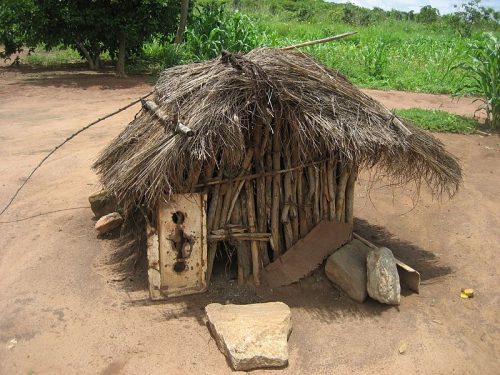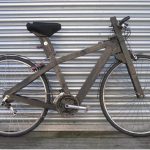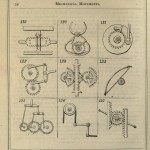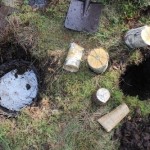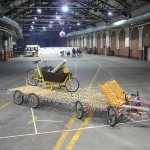Summarized from [paywall]: Trainer, T., A. Malik, and M. Lenzen. “A Comparison Between the Monetary, Resource and Energy Costs of the Conventional Industrial Supply Path and the “Simpler Way” Path for the Supply of Eggs.” Biophysical Economics and Resource Quality 4.3 (2019): 9.
Traditional housing for chickens in Zembe, Mozambique. By Ton Rulkens – Traditional housing 2, CC BY-SA 2.0.
Global sustainability requires large-scale reductions in rich world per capita resource use rates. Globalised, industrialised and commercialised supply paths involve high resource, energy, dollar and other costs. However, “The Simpler Way” involving small-scale integrated localised settlements and economies can enable enormous reductions in these costs. This study uses input–output analysis of one product, eggs, to illustrate how big the difference between the two paths can be.
The industrial path results in a dollar cost at the supermarket check-out that is at least twenty times that of the local path if a labour cost is included, and 100 times if one is not. The multiple for energy costs when the industrial total ends at the factory out-gate is about 166 kJ/4.3 kJ = 39/1. A complete account which added the energy costs of waste disposal and transport from the supermarket to the household, etc. might raise the cost for the industrial path to above 1.5 MJ per egg, i.e., to the region of 350 times the energy cost for the alternative path.
This study provides a concrete illustration of the large savings that can be associated with production in small scale, highly self-sufficient and cooperative local economies. It draws attention to the rarely recognised “diseconomies of scale”. In complex, multi-functional and integrated local economies the close proximity of productive activities along with informal networks of communication and production enable many functions to be carried out easily and spontaneously, eliminating the need for many intermediary functions, industries and costs.
Often outputs such as manures can immediately become valued inputs to other activities, many tasks and problems can be dealt with informally with minimal need for equipment, and many functions such as transport and warehousing can become unnecessary. Design can ensure that elements perform overlapping and multiple functions. For instance forest gardens can provide wind breaks,fruit, vegetables, grazing, honey, dyes and perfumes, leisure resources, habitat for birds that feed on garden pests, roofing shingles, chemicals such as eucalyptus and creosote, mulch, sawn timber and firewood. Familiar informal communication and sharing networks involving multi-skilled citizen performance of many functions can enable rapid action at little or no material cost.
The implications for sustainable development are profound. If the findings of this study are sound and generalizable the Simpler Way would enable very large reductions in resource and ecological impacts for sustainability to be achieved, but only if extremely radical changes are made in economic, political and cultural systems. With respect to Third World “development”, our results reinforce the emerging alternative view which seeks to avoid the dominant capital-intensive trickle-down approach and explores the potential of local, sufficient, cooperative, participatory, resource-cheap and frugal ways.
